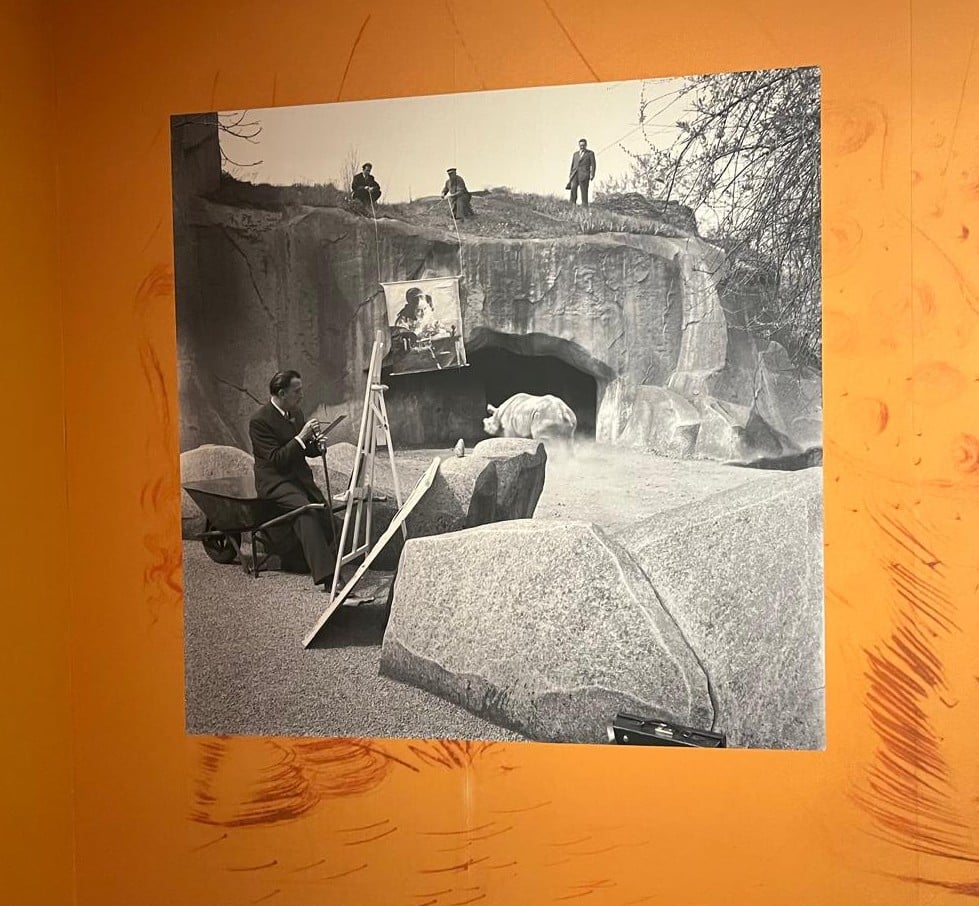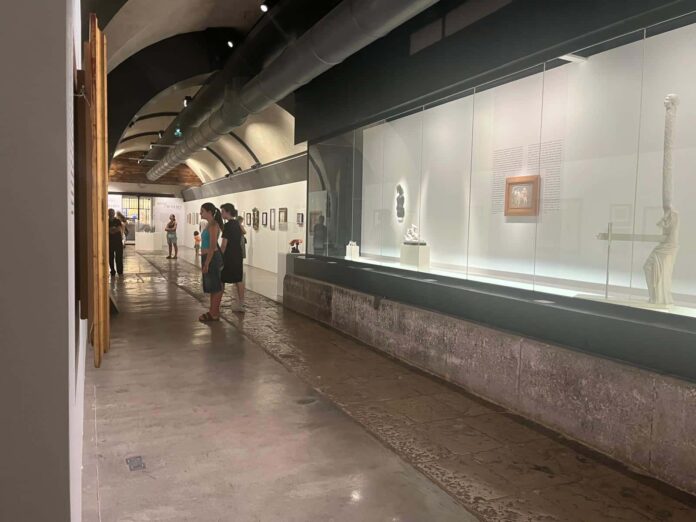The Lympia Cultural Space, the former prison of the port of Nice, is the location of the exhibition Salvador Dalí: Divine Creatures. Until November 23, 2025, you will find the fantastic bestiary there.
Spread over three floors, more than 96 works come from abroad and France, including paintings, drawings, sculptures, engravings, photos, and documents, are displayed in the exhibition located at the Lympia Cultural Space, until November 23, 2025. Titled Salvador Dalí: Divine Creatures, the master of surrealism immerses us in his imagination spanning over forty years.
“The exhibition revisits great myths, the medieval bestiary. The medieval bestiary, these are all the typical animals that he will reinterpret throughout his career. It has its meanings, its symbolism. When Salvador Dalí presents a butterfly, we shouldn’t seek its meaning, even in French culture,” clarifies Hélène Kessous, scientific assistant to the administrator of the Lympia Cultural Space.
Through the animals, the Catalan artist conveys his fantasies and fears. One of his obsessions is the rhinoceros’s horn and its skin. “He believes that the curvature of the horn is so perfect, it has something divine,” insists the scientific assistant.

Arriving in Paris in 1926, he contacted the surrealist group led by André Breton. At the same time, he met Gala, who was in a relationship with Paul Éluard, and who would become his wife and muse. Sexuality, decay, and death are recurring themes in his paintings.
Let’s recap some notable facts about the author
From 1934, Salvador Dalí held an ambiguous position regarding Adolf Hitler. His political choices considered dubious and his taste for classicism* affected his relationship with André Breton and the surrealists.
The rupture occurred upon his return to Europe, after the Second World War and his exile in the United States. From that moment on, the man was everywhere, both as a writer and painter. From the creation of jewelry, dresses, and furniture, he ventured both for his pleasure and the desire to earn money. Fascinated by science, he thought scientific knowledge proved the existence of God.

Inventor of a creation method, “paranoiac-critical”, the Catalan made as much impact on the history of surrealism* as on modern art. A great connoisseur of Sigmund Freud‘s psychoanalysis theories, the artist oscillates between psychoanalysis manuals and the manifestation of real troubles, drawn from his work Diary of a Genius, published in 1994.
The exhibition is organized according to the following schedule: from September 1st to June 30th, the cultural site is open from 10 a.m. to 5 p.m., from July 1st to August 31st, from 10 a.m. to 6 p.m. The Cultural Space is closed on Mondays and Tuesdays.
*Surrealism: a movement aiming to represent a strange world through unusual groupings of objects, collages, frottages, smudges, trompe-l’oeil, etc.
*Classicism: a doctrine primarily based on the union of reason, a sense of beauty associated with plausibility, decorum, purity of style, and choice of subjects, generally inspired by Antiquity.


